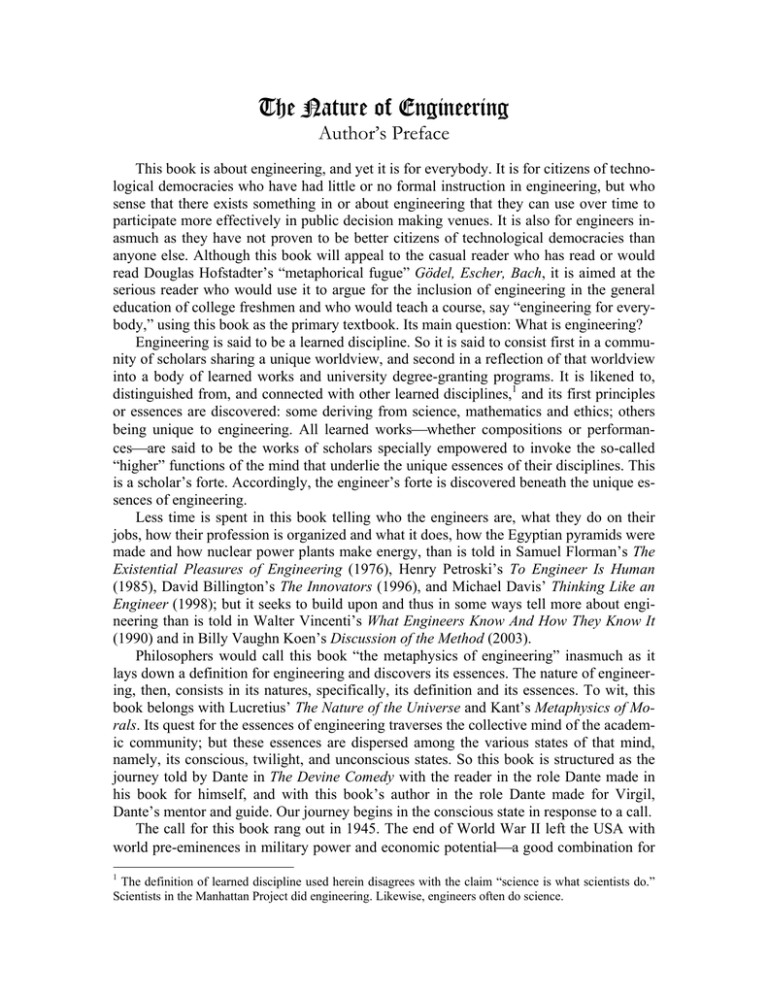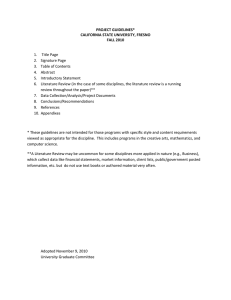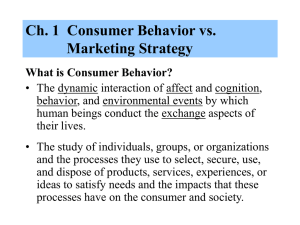The Nature of Engineering Author’s Preface
advertisement

The Nature of Engineering Author’s Preface This book is about engineering, and yet it is for everybody. It is for citizens of technological democracies who have had little or no formal instruction in engineering, but who sense that there exists something in or about engineering that they can use over time to participate more effectively in public decision making venues. It is also for engineers inasmuch as they have not proven to be better citizens of technological democracies than anyone else. Although this book will appeal to the casual reader who has read or would read Douglas Hofstadter’s “metaphorical fugue” Gödel, Escher, Bach, it is aimed at the serious reader who would use it to argue for the inclusion of engineering in the general education of college freshmen and who would teach a course, say “engineering for everybody,” using this book as the primary textbook. Its main question: What is engineering? Engineering is said to be a learned discipline. So it is said to consist first in a community of scholars sharing a unique worldview, and second in a reflection of that worldview into a body of learned works and university degree-granting programs. It is likened to, distinguished from, and connected with other learned disciplines,1 and its first principles or essences are discovered: some deriving from science, mathematics and ethics; others being unique to engineering. All learned works⎯whether compositions or performances⎯are said to be the works of scholars specially empowered to invoke the so-called “higher” functions of the mind that underlie the unique essences of their disciplines. This is a scholar’s forte. Accordingly, the engineer’s forte is discovered beneath the unique essences of engineering. Less time is spent in this book telling who the engineers are, what they do on their jobs, how their profession is organized and what it does, how the Egyptian pyramids were made and how nuclear power plants make energy, than is told in Samuel Florman’s The Existential Pleasures of Engineering (1976), Henry Petroski’s To Engineer Is Human (1985), David Billington’s The Innovators (1996), and Michael Davis’ Thinking Like an Engineer (1998); but it seeks to build upon and thus in some ways tell more about engineering than is told in Walter Vincenti’s What Engineers Know And How They Know It (1990) and in Billy Vaughn Koen’s Discussion of the Method (2003). Philosophers would call this book “the metaphysics of engineering” inasmuch as it lays down a definition for engineering and discovers its essences. The nature of engineering, then, consists in its natures, specifically, its definition and its essences. To wit, this book belongs with Lucretius’ The Nature of the Universe and Kant’s Metaphysics of Mo­ rals. Its quest for the essences of engineering traverses the collective mind of the academic community; but these essences are dispersed among the various states of that mind, namely, its conscious, twilight, and unconscious states. So this book is structured as the journey told by Dante in The Devine Comedy with the reader in the role Dante made in his book for himself, and with this book’s author in the role Dante made for Virgil, Dante’s mentor and guide. Our journey begins in the conscious state in response to a call. The call for this book rang out in 1945. The end of World War II left the USA with world pre-eminences in military power and economic potential⎯a good combination for 1 The definition of learned discipline used herein disagrees with the claim “science is what scientists do.” Scientists in the Manhattan Project did engineering. Likewise, engineers often do science. 2 the pursuits of national and personal wealth. But as the unifying effects of making war faded, division broke out over how the new wealth would be pursued and distributed. Dividing lines were drawn by the continuing conflict in the USA between Jeffersonian democracy, a legacy of Athenian democracy, and Jacksonian democracy, a legacy of the Roman Republic. This was a conflict over rights: the right of the individual to do his or her will, and the right of the state to do its will. For a hundred years a battleground of this conflict had been the curriculum. On the Jeffersonian side of the conflict was classical education. The contents of classical education were the great books, primarily those of Greek antiquity, and its aim was Christian character for the wealthy and the ministry. On the Jacksonian side was practical or pragmatic education now associated with John Dewey. The contents of pragmatic education were weighted toward applied science and mathematics, and its aims were jobs in the industrial revolution, especially for the children of the working classes. In the foreground of this conflict grew two challenges to any hope of maintaining a democracy fit to efficiently govern a technological society. First was and remains the problem of what to teach everybody, a problem challenged by a proliferation of knowledge unrealized ever before and spiraling out of everybody’s range of comprehension. Second was and remains the problem of how to teach it to everybody, a problem challenged by a diversifying culture exhibiting a plethora of tastes and abilities and taking on global proportions. In the background lurked the fear of communism with its assurances of unity and efficiency albeit at the price of individual freedom. Then a compromise came. General Education in a Free Society was published in 1945. A report of the faculty committee commissioned by then Harvard University President James Bryant Conant, this compromise divided all education into two parts: general education, i.e. “that part of a student’s whole education which looks first of all to his life as a responsible human being and citizen”; and special education, “that part which looks to the student’s competence in some occupation.” The means of general education was classicism and the means of special education was pragmatism. To general education was given the common learning: tentatively; permanently if a principle for it was found uniting all of the learned disciplines in a coherent whole having broad appeal. Early candidates for the principle, e.g. Christianity, the great books and case studies, were ruled out for lack of sufficient scope and/or appeal. So, the report rang out a call for a unity principle. A new legitimacy for the call came at the height of the cold war and its atomic threat. In 1955 Albert Einstein, the 1921 winner of the Nobel Prize for physics, and Bertrand Russell, the 1950 winner of the Nobel Prize for literature, crafted the Pugwash Manifesto asserting that scientists should take some responsibility for the uses of science. This led in 1957 to the Pugwash Conferences which would win the Nobel Peace Prize in 1995. A new urgency for the call came in 1959 as C.P. Snow’s The Two Cultures exposed a gulf of mutual incomprehension between scientists and the so-called literary intellectuals. In the 1960s new demands for the common learning were made by activists opposing the Vietnam War and advocating racial and gender equality. New candidates for a unity principle, e.g. critical thinking and cultural literacy, came in but none were elected. A new ring to the call for this book was heard around the world in the 1970s and 1980s as scholars responded to allegations of misconduct in science, fear of nuclear power and waste, environmental issues, abortion, the Ford Pinto and Agnew Bribery scandals, and so on. They responded with new engagements of learned disciplines, e.g. engineering 3 ethics, bioethics, medical ethics, environmental ethics, technology policy and history of technology, but no comprehensive unity principle emerged. Without a unity principle to guide them, university administrations succumbed to faculty power struggles for dominance of general education. The compromise fragmented. Meanwhile, beneath the noise level of the call, ideas about unity that would inspire this book were forming. In the period 1964-86 Noam Chomsky revolutionized linguistics with his idea that all human beings have the same capacity for the same grammatical rules underlying all languages, and that this capacity is in-born, i.e. “hard-wired,” so to speak, in the brain from birth. In 1988 Bill Moyers introduced Joseph Campbell to TV audiences. Campbell taught that the mythic stories of all cultures are similarly structured and serve the same principles of social order. In Acts of Meaning (1990) Jerome Semour Bruner suggested that human beings have a capacity for narrative that is hard-wired in the brain from birth. This is to say that humans have a “readiness for narrative,” an inclination to order experience as a story and to think in storied terms: causative sequence, e.g. the argument, strategic plan, plot; situation or setting, e.g. the empiricist’s material or real world, the theologian’s spiritual world, the engineer’s assigned world2; thesis or point; person, voice, point of view; etc. Today, this book answers the call with organizations of learned works exhibiting similar storied terms into learned disciplines. Some of these terms are handed down from Western mythology in its teachings about social order and heroism. These teachings suggest that the learned disciplines can be organized into three categories, namely, the popular, priestly and regal categories. A popular learned discipline consists in learned works exhibiting a specialty or study at the highest degree in either the knowledge or the values category of learning. Such a specialty uniquely empowers its specialists to invoke higher-order functions of the mind, respectively, the cognition and the affect, when composing their works. The main point of a work is either a knowledge claim or value judgment, and its mood is the indicative. A work may be purely rational, having no setting at all; or it may have one or more settings, in which case its subject and main point reference the real world. Its causative sequence obeys the rules of discursive reasoning, and it is told from the point of view of a Socratic hero accommodating society to the individual and the individual to nature. The Western version of this point of view originated in Greek philosophy and literature, flowed into the stewardship of Islamic scholars, and emptied into the medieval scholastic universities at Oxford and Cambridge. We shall see that mathematics, the sciences3 and the humanities are Greek popular learned disciplines. A priestly learned discipline consists in learned works exhibiting a specialty in the praxis or plan-making category of learning. Such a specialty uniquely empowers its specialists to invoke the conation, a higher-order function of the mind. The subject and main point of a work reference a metaphor for the hyperreal world, a speculated enlargement of the real world, and its mood is the subjunctive. Thus, its causative sequence may obey rules that transcend the necessities of reason on appeal to faith, intuition or artistic illumination; and it is told from the point of view of a leader responsible for the unity of the in2 Broome, T.H. 1985. Engineering the Philosophy of Science. Metaphilosophy, vol. 16, no. 1, pp. 47-56. Einstein speculated a hyperspace, an extension of three-dimensional space into N dimensions. His concern, which remains the concern of his research descendents, was not to explain hyperspace but to attribute to it the causes of certain otherwise unexplainable effects in the real world. 3 4 dividual, society and nature. The Western style of this leadership originated with the historical Jesus and flowed into the theologies of Paul and Arius, then into Gothic Paganism, and emptied into the medieval universities of Germany and Eastern Europe; but it was perfected by Martin Luther. It put faith over deeds and put the will of the individual over reason. We shall see that the theoretical dimensions of religion, law, engineering, medicine and the high arts are Gothic priestly learned disciplines. A regal learned discipline consists in learned works exhibiting a specialty in the practice or plan-execution category of learning. Such a specialty uniquely empowers its specialists to cultivate praxis-informed psycho-motor skills, higher-order functions of the mind-body unity. The subject and main point of a work reference a metaphor for the hyperreal world, but its mood is the imperative. Thus, its causative sequence obeys the rules of rhetorical reasoning, and it is told from the point of view of a leader responsible for accommodating the individual and nature to society. The Western style of this leadership originated with the historical Jesus and flowed into the theologies of his brother James, Tertullian, and Augustine⎯who perfected it, and emptied into the medical, business and law universities in medieval Italy. It put deeds over faith and put the will of God, vested in secular offices of Church power and authority, over the reasoned will of the individual. We shall see that the practical dimensions of religion, law, engineering, medicine and the high arts are Roman regal learned disciplines. Essences of engineering found in the collective conscious of the academy include the imperatives that initiate the causative sequences in engineering learned works, the constraints used to win commitments to the points made by these sequences, and certain principles imported from the sciences, mathematics, ethics, etc. Essences found in the collective unconscious of the academy are metaphorical devices for transcending the popular point of view when importing Greek works into Gothic priestly and Roman regal points of view. Such devices are herein called praxistics.4 Finally, a unity principle is laid down as a goal for the common learning⎯generalist expertise. Specialist expertise consists in the ability to understand a narrow variety of learned works in terms of their learned contents, namely, knowledge, values, praxis and practice, and the skill to bring them to bear upon the pursuits of truth and the good, and upon the task of intervening into the present for the better. Generalist expertise consists in the ability to obtain meanings of a broad variety of learned works from their storied terms, and in the skill to bring them to bear upon the problems of participating effectively in public decision making venues, and finding and fulfilling one’s destiny in globalizing technological cultures. This book is an example of what generalist expertise can do. Taft H. Broome, Jr. Sc.D. May, 2006 4 A praxistic is a reference to any of Koen’s heuristics and to its function in an engineering learned work as a storied term of that work.



